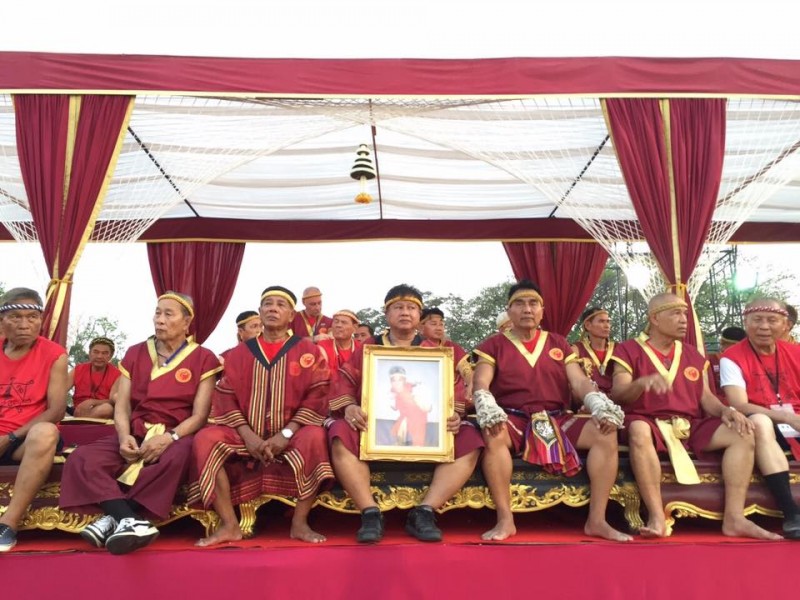Nai Kanom Tom Day
As in every year, Nai Kanom Tom day. This important event takes place every year on March 17, in the old capital city of Thailand, Ayudthaya. It also includes the important Wai Kru ceremony. Many high ranked Muaythai practitioners of the WMC participate in this event which is organised by the Tourism Authority of Thailand and fully supported by World Muaythai Council under the Royal Patronage and IFMA.
Here is a little historical anecdote about our Muaythai Legend, Nai Khanom Tom….
In yesteryear, elephants crossed the border from Burma to siam carrying the best fighter from Burma to challenge the chosen champion of Siam (now known as Thailand) to a Muaythai bout. But one without rounds, timekeepers and the sport’s recent innovations. The two champions simply fight forearms strapped in rope, bare knuckled till one or the other drops; an old fashioned fight that yesterday’s heroes would recognise. Then the elephants carry the defeated or triumphant fighter back to Burma. Legends are made from such encounters of this legendary sport.
Nai Khanom Tom is the bedtime story for Thai children letting them dreaming about legends and warriors which have been protectors of Kings and the country. The name Nai Khanom Tom is one that every Thai child knows and one that graces every book or publications about the sport. He is the one of the greatest Muaythai hero.
In 1774, Nai Khanom Tom was a war prisoner in Burma. The Burmese had captured him when they sacked and burnt Thailand’s ancient capital, Ayutthaya. King Mangra of Burma left his capital in the north at Krung Angwa to travel to Rangoon – today’s capital, to attend the religious ceremony at Chevedakang Pagoda. The Thais still claim that the celebration was at Ket That Pagoda. What is known is that the celebrations included many entertainments, sports and games, among them Muaythai, the martial art of the battlefield.

The Burmese had their own martial art – one not unlike Muaythai and its name is Parma. Parma relied heavily on the fist as the major weapon whereas Muaythai boxers were famous then and now for their skills in using elbows, knees, feet as well as fists in a fight. King Mangra wanted to see which fighting skill was superior and called for the best Siamese from the prisoners to fight his Burmese fighters. Nai Khanom Tom was the natural choice for the Thais as he was renowned for his Muaythai skills and his never die attitude.
The scene was very different from today’s fight. No timekeepers, no rounds, no gloves – the arms bound in hemp ropes instead – basic groin protection, but the groin was a legitimate target. It was a bare knuckle full on fight to the finish, not in a ring but an arena flanked by the pomp and panoply of a Burmese court fresh from victory. It has been the real fight of the ancient art of MuayBoran. There were basic differences between the two fighting styles. The Burmese boxers wore a traditional ankle length sarong in which they danced, almost in slow motion, around their opponent waiting and looking for an opening. The Burmese rely more on their fists than their feet, knees and elbows. The Thais on the other hand fought in a pannung; a traditional form of loincloth wrapped once around the body and tied in a knot at the back and use everything they can. Nai Khanom Tom had then a freedom of movement and mobility that his opponent lacked.
Nai Khanom Tom was a great fighter. Without a pause, he took them one by one through a battering and bruising contest. He defeated ten of Burma’s best. He fought for His king, his country, his friends and the freedom for all.
King Mangra was one of the first to applaud the feat he had witnessed. “Every part of the Thai is blessed with venom even with his bare hands he can fell ten opponents”. The King gave Nai Khanom Tom his freedom and he returned to the old Siam and is given a hero’s welcome. The Thais badly needed a morale booster after the crushing defeat they had suffered in Ayutthaya.

For the Thai people, for Muaythai, the legend of Nai Khanom Tom illustrates the best attributes to Muaythai: the indomitable will to win for an honour other than his own and the willingness to face any odds in defence of the fighting art. Above all, Nai Khanom Tom symbolises the belief that all Muaythai warriors have in their martial art – the belief that nothing can stand against it except itself. It’s a belief that has been proven right again and again. Muaythai will never die.
This year, many practitioners from around the world again turn up to honour the spirit of Muaythai, the ancient tradition which runs so deep, and to show homage to the ancestors of the art.
